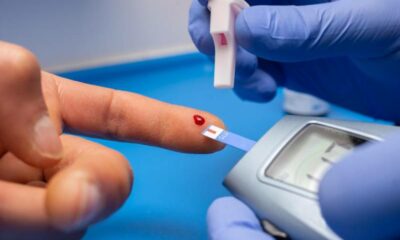Diabetes casts a long shadow, impacting millions globally. While genetics play a role, type 2 diabetes, the most common form, is largely preventable through lifestyle modifications. Among these, exercise emerges as a powerful weapon. This article delves into the best exercises for diabetes prevention and management, empowering you to move your body for a healthier future.
Understanding the Science: How Exercise Combats Diabetes
Exercise exerts its magic against diabetes through multiple mechanisms:
- Improved Insulin Sensitivity: Regular physical activity enhances your body’s ability to utilize insulin, the key that unlocks cells to absorb blood sugar. This leads to better blood sugar control and reduces the risk of diabetes.
- Enhanced Blood Sugar Management: Exercise helps your muscles burn blood sugar for energy, lowering blood sugar levels in the bloodstream. This immediate effect is beneficial, but even after exercise, your body continues to utilize blood sugar more efficiently.
- Weight Management: Excess weight, particularly around the waist, contributes to insulin resistance. Exercise promotes weight loss or helps maintain a healthy weight, significantly reducing diabetes risk.
Beyond Blood Sugar: The Holistic Benefits of Exercise
While managing blood sugar is crucial, exercise offers a plethora of additional benefits for those at risk of or living with diabetes:
- Improved Cardiovascular Health: Regular physical activity strengthens your heart, improves blood circulation, and lowers blood pressure, all essential for reducing the risk of heart disease, a common complication of diabetes.
- Enhanced Mood and Stress Management: Exercise is a natural mood booster. It releases endorphins, hormones that elevate mood and promote feelings of well-being. This can be particularly beneficial for managing stress, which can worsen blood sugar control.
- Increased Energy Levels: Exercise strengthens your muscles and improves your body’s ability to utilize oxygen. This translates to increased energy levels throughout the day, making it easier to manage daily activities.
- Improved Sleep Quality: Regular physical activity can significantly enhance sleep quality, another crucial factor in diabetes management.
Choosing the Right Exercise for You: Variety is Key
The beauty of exercise for diabetes prevention and management lies in its versatility. There’s something for everyone, regardless of age, fitness level, or physical limitations. Here’s a breakdown of some of the best exercise options:
Cardiovascular Exercise (Aerobic Activity):
- The Foundation: Aim for at least 150 minutes of moderate-intensity aerobic activity or 75 minutes of vigorous-intensity activity per week.
- Moderate-Intensity Options: Brisk walking, swimming, cycling, dancing, elliptical training are excellent choices. You should be able to carry on a conversation while moderately exerting yourself.
- High-Intensity Interval Training (HIIT): Short bursts of intense activity followed by recovery periods can be highly effective for time-crunched individuals. However, consult your doctor before starting HIIT if you’re new to exercise or have any health concerns.
Strength Training:
- Building Muscle Power: Strength training, also known as resistance training, builds muscle mass. Muscle tissue is more metabolically active than fat, meaning it burns more calories even at rest, contributing to better blood sugar control.
- Options: Weightlifting, bodyweight exercises like squats, lunges, and push-ups, resistance bands, and weight machines are all great options. Aim for strength training sessions at least two to three times per week, targeting all major muscle groups.
Flexibility and Balance Exercises:
- Maintaining Range of Motion: These exercises improve flexibility and balance, which can become more challenging with age and may be impacted by diabetes. Yoga, Tai Chi, and Pilates are excellent options.
Tailoring Your Exercise Program:
- Listen to Your Body: Start slowly and gradually increase intensity and duration to avoid injuries. Pay attention to your body’s signals and take rest days when needed.
- Consult Your Doctor: Especially if you’re new to exercise, have any health concerns, or are already diagnosed with diabetes, discuss your exercise plan with your doctor. They can provide personalized guidance and ensure your exercise program is safe and effective.
Beyond the Gym Walls: Creative Ways to Move Your Body
Exercise doesn’t have to be confined to a gym. Here are some creative ways to incorporate movement into your daily routine:
- Take the Stairs: Ditch the elevator whenever possible.
- Park Further Away: Park further away from your destination and walk the extra distance.
- Active Commuting: Consider biking, walking, or taking public transport to work if feasible.
- Deskercise: Break up long periods of sitting with simple desk exercises like leg lifts, stretches, or arm circles.
- Household Chores as Exercise: Turn daily chores like gardening, mowing the lawn, or cleaning into opportunities for movement.
- Active Games and Hobbies: Engage in activities you enjoy, like dancing, playing sports with friends, or taking an active fitness class.
- Make it Social: Find an exercise buddy or join a group fitness class. Having company can make exercise more enjoyable and motivating.
Staying Motivated: Keeping Your Fitness Journey on Track
Maintaining an exercise routine can be challenging. Here are some tips to stay motivated:
- Set SMART Goals: Establish Specific, Measurable, Achievable, Relevant, and Time-bound goals. Celebrate achieving smaller milestones to stay motivated.
- Track Your Progress: Use a fitness tracker or journal to monitor your workouts and progress. Seeing your improvement can be a powerful motivator.
- Find Activities You Enjoy: Choose exercises you genuinely find fun. You’re more likely to stick with something you look forward to.
- Reward Yourself: Celebrate your achievements with non-food rewards like a relaxing massage, a new workout outfit, or an activity you enjoy.
- Focus on How You Feel: Shift your focus from weight loss to how exercise makes you feel – energized, empowered, and in control of your health.
Living with Diabetes: Exercise Considerations
If you’ve already been diagnosed with diabetes, here are some additional considerations for your exercise program:
- Monitor Your Blood Sugar: Check your blood sugar levels before, during, and after exercise, especially if you’re taking insulin or medications that affect blood sugar.
- Stay Hydrated: Drink plenty of water before, during, and after exercise to prevent dehydration.
- Wear Proper Footwear: Wear comfortable, supportive shoes to prevent injuries.
- Be Aware of Hypoglycemia: Hypoglycemia, or low blood sugar, can occur during exercise. Be aware of the symptoms and carry snacks like glucose tablets to manage it.
- Modify Exercises as Needed: Adapt your exercise routine based on your needs. For example, low-impact exercises like swimming or water aerobics may be preferable if you have joint issues.
Conclusion: Move Your Body, Empower Your Health
Exercise is a powerful tool for both preventing and managing diabetes. By incorporating physical activity into your daily routine, you’re taking control of your health, improving blood sugar control, and reaping a wealth of additional benefits for your overall well-being. Remember, consistency is key. Start slowly, find activities you enjoy, and celebrate your progress. With dedication and a bit of creativity, you can transform exercise into a source of empowerment and move your body towards a healthier future.

 Diabetology1 week ago
Diabetology1 week ago
 Diabetology6 days ago
Diabetology6 days ago
 Diabetology5 days ago
Diabetology5 days ago
 Diabetology1 week ago
Diabetology1 week ago
 Diabetology1 week ago
Diabetology1 week ago
 Diabetology5 days ago
Diabetology5 days ago
 Diabetology2 days ago
Diabetology2 days ago
 Diabetology3 days ago
Diabetology3 days ago






